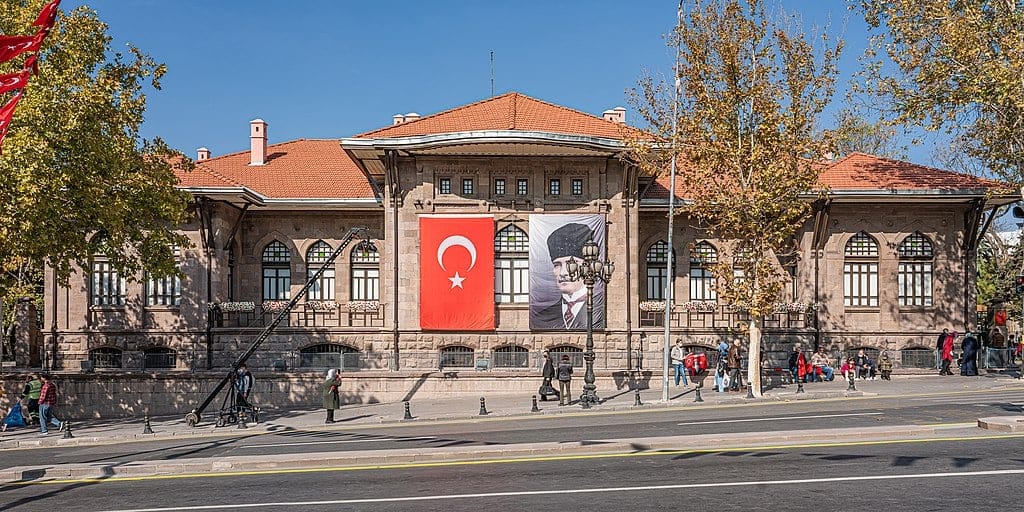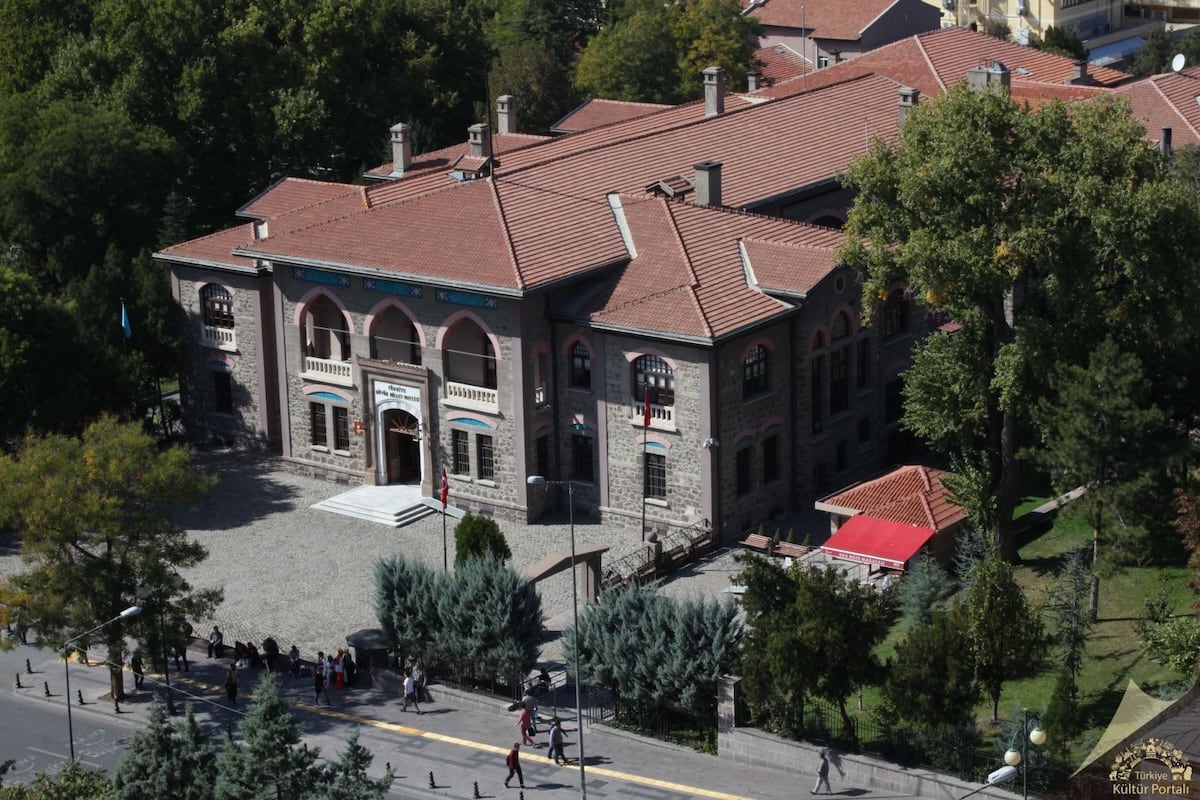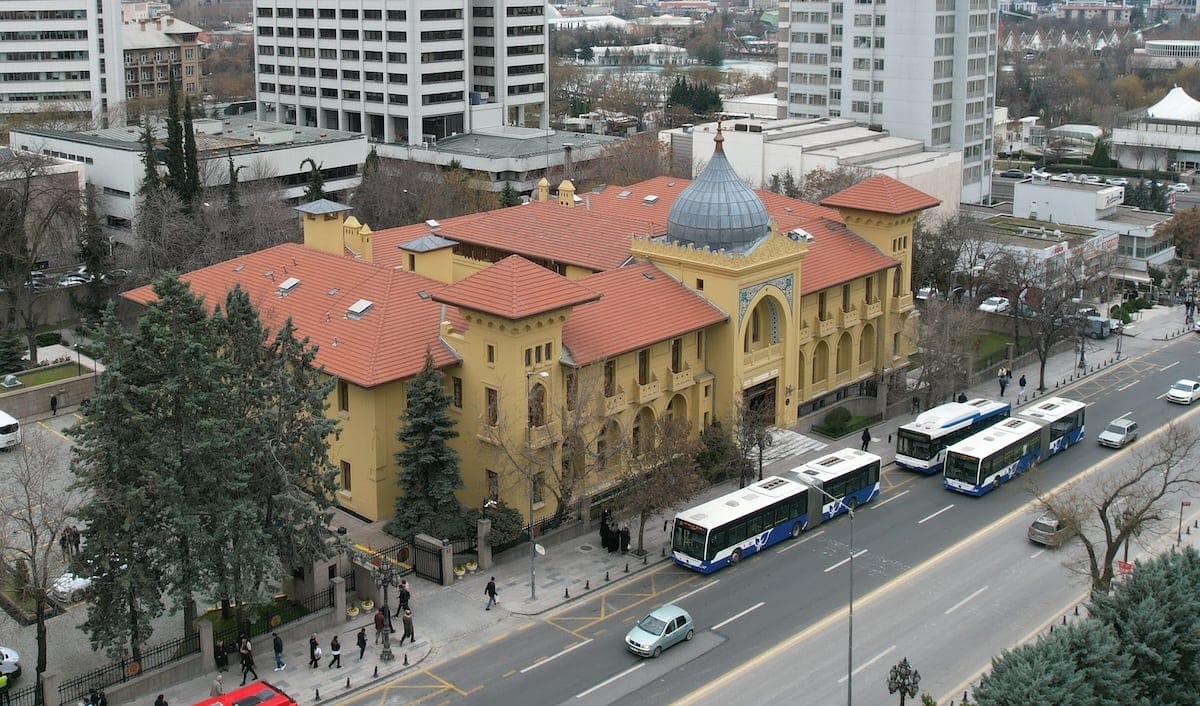Ankara is the land where the republic was declared, Turkey was founded and governed. After the establishment of the Republic of Turkey, while everyone expected Atatürk to make Istanbul the capital, he made Ankara the capital. Istanbul, with its status of opening and closing eras, is the apple of Turkey’s eye, but Ankara is its heart.
A Walk Through the History of Ankara
Today we are in Ulus, the district where both the republic and the city were founded. We are right in front of the huge statue of Atatürk on horseback in a large square. The place we are currently standing on served as a ceremony area where important events and commemorations were held until Anıtkabir was built. This statue, depicting Gazi Mustafa Kemal Atatürk on his horse named Sakarya, also features another significant element—a woman carrying a cannonball on her back. The year is 1927. Women, who played a crucial role in the establishment of the Republic, are depicted with their strength in a statue at the heart of the capital. From here, we will follow the traces of the republic.

A Republic Built Around a Statue
Ulus is the center of old Ankara and is located at a very accessible point. The district, which has old markets and inns with a bazaar atmosphere, also hosts the buildings where the republic was founded. Ulus, with the recent improvement works carried out to revitalize the social and cultural texture, gives us the atmosphere of the old era. Getting here takes about half an hour on foot from Kızılay, the city’s central location, two stops by subway, or 10 minutes by taxi. If you prefer to take a route starting from Kızılay to Ulus, we recommend walking along the wide sidewalks, enjoying the surroundings, and savoring the atmosphere.
So why are we here? To follow the traces of the republic established in Ankara.
Our first stop is the War of Independence Museum, also known as the First Grand National Assembly (I. TBMM) Building. Located next to Ulus Square, this building was used as a headquarters during the War of Independence in 1920 and served as the first parliament of the Republic until the Second Assembly building opened in 1924. Used for various purposes until 1961, the structure was converted into a museum and now operates under the Ministry of Culture and Tourism, attracting both local and foreign tourists.
[photo of War of Independence Museum]

War of Independence Museum: Where Turkey’s Independence Was Born
The main corridor welcomes us in the first section of this building, whose exterior is made of Ankara stone. This corridor also draws a line connecting all the exhibition halls. On the right side of the corridor, you’ll find the Prayer Room, the Speaker’s Office, the General Assembly Hall, and the Chief Secretary’s Office. On the left side, there are the Clerks’ Room, the Communication and Armament Room, the Lobby, the Constitution Committee Room, and the Presidency Council Room.
April 23, 1920, is the opening date of the parliament we are currently in. This date, Turkey’s first national holiday, was dedicated to children by the order and wish of Atatürk and is celebrated every year as April 23 National Sovereignty and Children’s Day. This holiday is still celebrated with great enthusiasm throughout Turkey. The tradition, which began with Atatürk seating children in his own office, continues, and the day is marked with official ceremonies in every corner of the country.
A structure where history began to be written. The War of Independence Museum is a milestone for the Republic of Turkey. It is here that the War of Independence, masterfully led by Atatürk, was carried out through the decisions made in this parliament. The first constitution, the adoption of our national anthem, the İstiklal Marşı, the abolition of the Sultanate, the recognition of Ankara as the capital, the proclamation of the Republic, and the election of Gazi Mustafa Kemal as the President of the Turkish Republic were all approved and enacted in this parliament.
The salvation of a nation, the winning of a war, and the establishment of a republic were all made possible by decisions taken within these walls. A building that we consider as four walls and one roof actually tells us stories and teaches us about the past. Our journey through the Republic is not over; we immediately head 350 meters to the nearby Republic Museum.
Republic Museum: A Witness to Reform and Change
This is the building of the Second Grand National Assembly of Turkey, a significant landmark in Turkey’s political history, was opened in 1924 when the First Grand National Assembly building proved insufficient, and it served until 1960. The building features Seljuk and Ottoman motifs and is adorned with tiles. The wooden ceiling decorations, arches, and eaves reflect the architectural characteristics of that period.

This structure had witnessed important events such as the implementation of Atatürk’s principles and reforms, the enactment of important laws for the Republic of Turkey, the signing of international agreements and the transition to a multi-party system. The most magnificent part of this museum, which houses the belongings of Turkey’s first three presidents, is the assembly hall. The parliament, which had 116 seats, had managed to host up to 610 members of parliament, especially during election times.
While visiting the Republic Museum, we witness the establishment of a republic that laid its foundations within this building and its development and ability to stand on its own. We see how a nation emerging from war took decisive steps to protect its land and establish a lasting republic.
Ankara Palas: A Place for Celebration and Progress
Leaving the Second Assembly, we just cross the street. We are greeted by Ankara Palas, which is affiliated with the National Palaces. Built to meet the need for a social facility, this Palas is also a significant milestone in Turkish political history and Turkey’s international bureaucracy.
[photo of Ankara Palas]

In the 1930s, this building was well known as a frequent gathering place for politicians, journalists, and artists. It also served the function of hosting official delegations and guests from abroad. Some innovations introduced to Turkish social life were first initiated here. The emphasis on gender equality was also first made here.
Ankara Palas, the venue of the first republic balls, with its façade covered in tile decorations, is an important work of the First National Architectural Movement. The three-story building was initially designed as a guesthouse, with 60 guest rooms. On the ground floor, there is a large ballroom, a tea and game room with an adjacent terrace, and a large dining hall at the back.
It is known that Iranian Shah Reza, Afghan King Amanullah Khan, Iraqi King Emir Faisal, Greek Prime Minister Eleftherios Venizelos, and U.S. President Dwight Eisenhower were hosted here. Ankara Palas still hosts important days and events for embassies. In 2024, this place gained museum status and is a perfect location to experience the palace atmosphere and imagine the balls that took place here in the 1920s and 1930s.
Discovering Ankara: A City of History and Hidden Gems
We embarked on a huge historical journey around a square in Ulus. We established a republic, laid its foundations, advanced it, and celebrated it. We walked through historical paths and witnessed cultural change and development. Ankara is a city that can surprise you anytime, anywhere with its dozens of museums.
All sites affiliated with the National Palaces in Ankara are closed on Mondays. Ankara Palas can be visited between 09:00 and 17:30, except on Mondays. Admission is not free of charge, but tickets can be purchased at the entrance. The Republic and Liberation Museums are also closed on Mondays. They are open for visits between 09:00 and 18:00. Entrance fee is charged, and museum pass is accepted.
